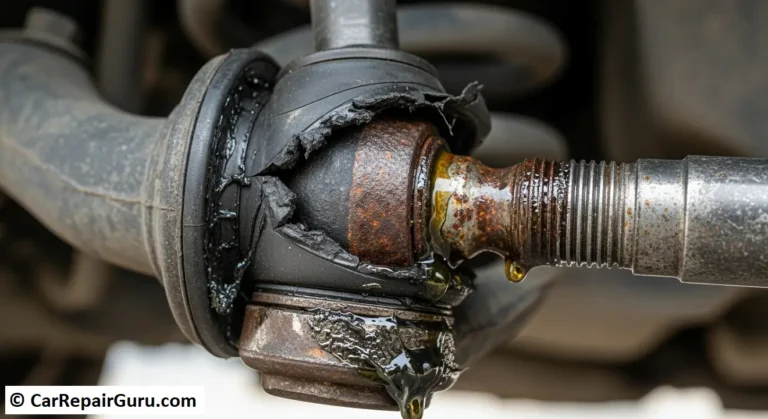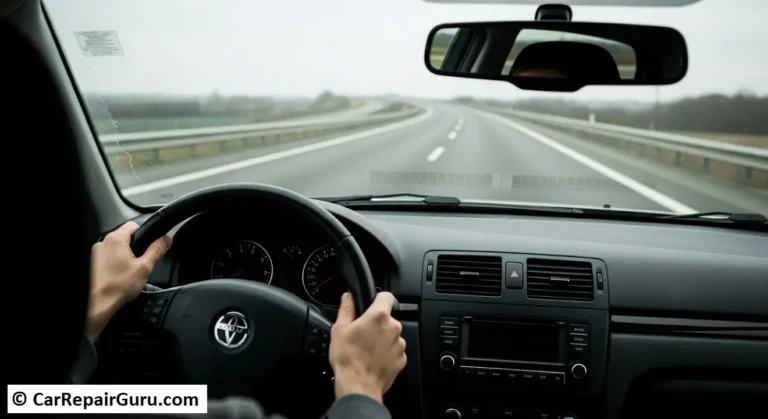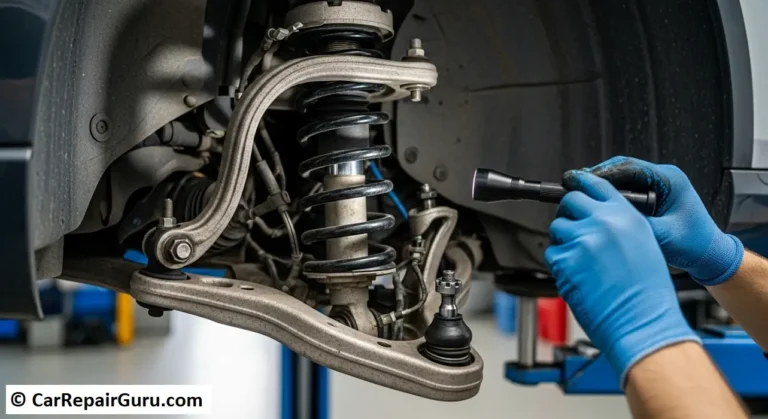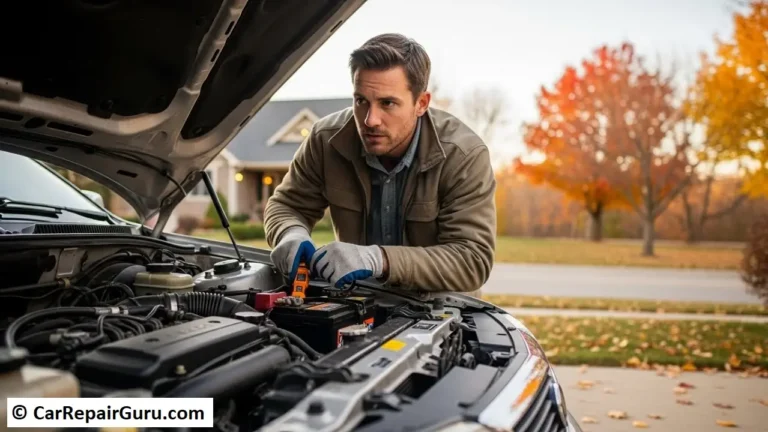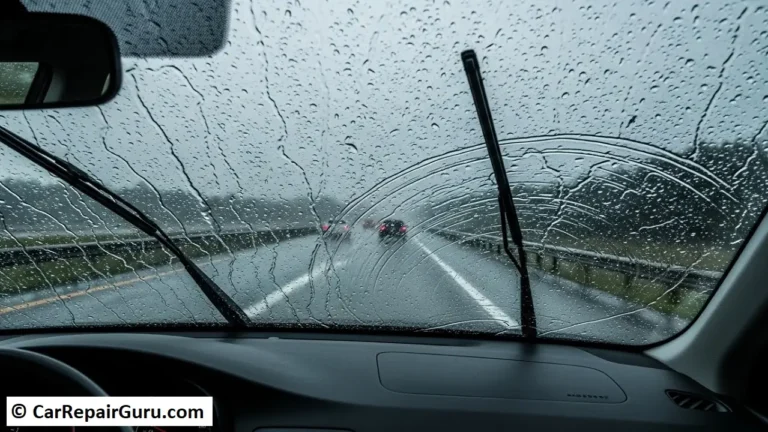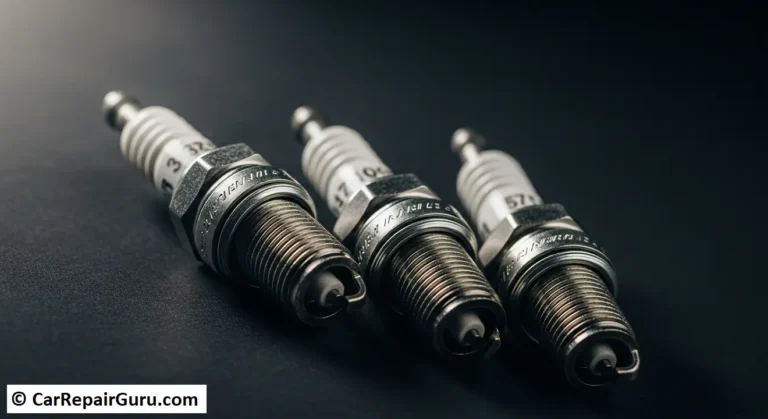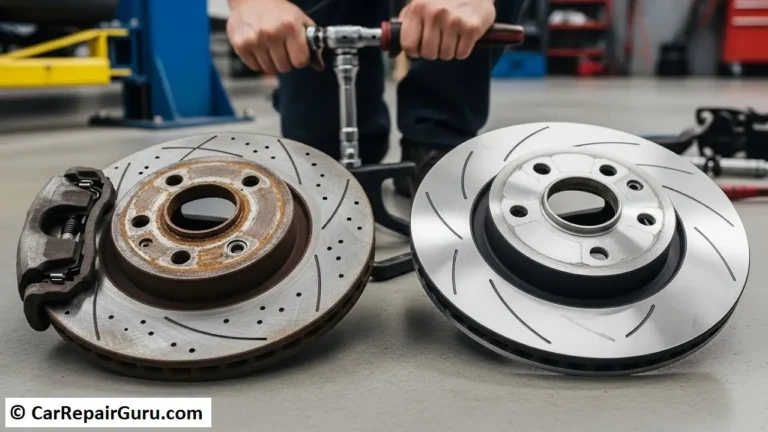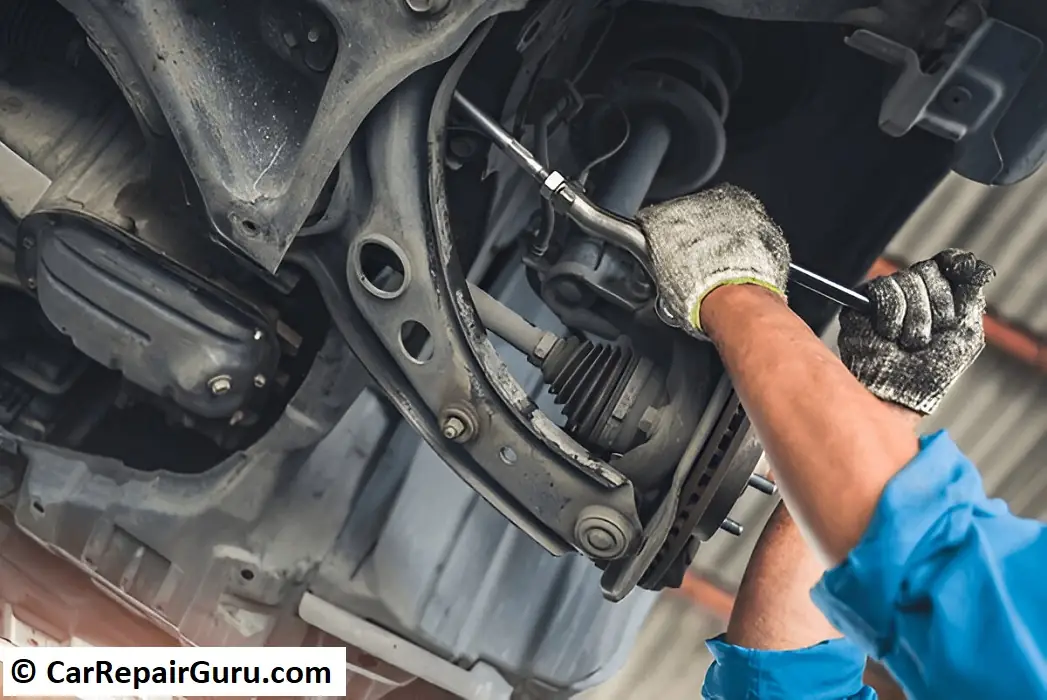
Car control arms are essential components of your vehicle’s suspension system. They connect the wheel hub and steering knuckle to the frame, allowing for smooth movement as the car navigates uneven roads. Over time, wear and tear can cause control arms to deteriorate, leading to noticeable symptoms like steering instability or uneven tire wear. Replacing them promptly is vital to ensure a safe and comfortable ride.
This guide provides everything you need to know about replacing car control arms, including costs, tools, step-by-step instructions, and safety tips. Whether you’re a DIY enthusiast or considering professional help, this information will prepare you for the task ahead.
What is a Car Control Arm?
A car control arm is a crucial component of your vehicle’s suspension system. Acting as a connection between the wheel assembly and the vehicle’s frame, it ensures stability and proper alignment while driving. Each control arm is equipped with bushings, which are rubber or polyurethane sleeves that absorb shock and allow for smooth, controlled movement of the suspension. These bushings also reduce vibrations, enhancing the overall driving experience.
Control arms play a key role in suspension system maintenance by ensuring the wheels remain in alignment during motion. This allows the tires to maintain consistent contact with the road, improving handling and safety. When control arms or their bushings fail, you may notice steering instability, uneven tire wear, or clunking noises, especially when driving over bumps. Prompt inspection and replacement are essential to avoid further suspension damage and maintain optimal vehicle performance.
Symptoms of a Faulty Control Arm
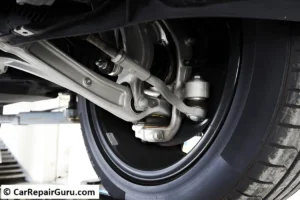
Recognizing the symptoms of bad control arms is essential for maintaining your vehicle’s safety and performance. Faulty control arms can compromise the suspension system, affecting steering and stability. Here are some common signs to watch for:
- Uneven Tire Wear
If your control arms or bushings are damaged, they can throw off the wheel alignment, causing uneven wear on your tires. This is one of the most noticeable early signs of control arm issues. - Steering Instability
A bad control arm often leads to difficulty steering, especially at higher speeds. You might experience pulling to one side or excessive play in the steering wheel, making the car harder to control. - Suspension Noise
Faulty control arms may cause clunking or knocking sounds, particularly when driving over bumps or uneven terrain. This happens because the worn or loose components can’t absorb shocks effectively. - Vibrations While Driving
Damaged control arms or bushings can create vibrations that travel through the steering wheel, making the ride uncomfortable.
Ignoring these symptoms can lead to more severe suspension damage and unsafe driving conditions. Prompt replacement ensures better handling, reduced wear on tires, and improved safety.
Causes of Control Arm Failure
Control arm failure is often a result of prolonged wear, sudden impacts, or environmental factors that compromise the component’s integrity. Understanding these causes can help you take preventative measures and address potential issues before they escalate.
- Wear and Tear
Over time, the constant movement of the control arm and its bushings leads to gradual deterioration. This wear can cause vehicle handling problems, especially in older cars or those frequently driven on rough roads. - Road Impacts
Hitting potholes, curbs, or debris at high speeds can damage the control arm or its bushings. These sudden impacts strain the suspension system, leading to uneven tire wear and compromised alignment. - Corrosion and Environmental Factors
Exposure to road salt, moisture, and extreme temperatures can accelerate the corrosion of metal components. Rust weakens the control arm, increasing the likelihood of failure.
Regular inspections and maintenance are essential to avoid the common uneven tire wear causes and ensure your vehicle remains safe and responsive on the road.
How to Replace a Control Arm: Step-by-Step Guide
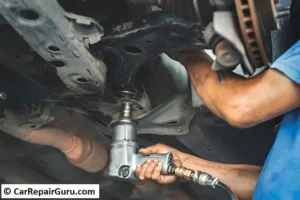
Replacing car control arms can seem intimidating, but with the right tools and guidance, it’s a manageable task for anyone familiar with DIY car repairs. Follow these step-by-step instructions for a safe and effective replacement.
Tools Needed:
- Floor jack and jack stands
- Socket set and ratchet
- Ball joint separator
- Wrenches
- Pry bar
- Torque wrench
These essential tools for car repair will help ensure the process is efficient and secure.
Step 1: Secure the Vehicle
Park the car on a flat surface, engage the parking brake, and block the rear wheels. This step ensures safety throughout the repair process.
Step 2: Lift the Vehicle
Using a floor jack, lift the vehicle at the appropriate jack points and place jack stands under the frame. Ensure the car is stable before working underneath.
Step 3: Remove the Wheel
Loosen and remove the lug nuts to take off the wheel, giving you access to the control arm.
Step 4: Disconnect the Ball Joint
Use a ball joint separator to disconnect the ball joint from the steering knuckle. Be careful not to damage the surrounding components during this step.
Step 5: Detach the Control Arm
Unbolt the control arm from the frame and the suspension system. A pry bar may be helpful for loosening stuck bolts. Take note of the orientation for easier reassembly.
Step 6: Install the New Control Arm
Position the new control arm in place and secure it with bolts. Tighten them using a torque wrench to the manufacturer’s specifications to ensure proper alignment and stability.
Step 7: Reassemble the Components
Reconnect the ball joint to the steering knuckle and ensure all bolts are tightened securely. Reattach the wheel and lower the car back onto the ground.
Step 8: Perform a Wheel Alignment
After replacing car control arms, a wheel alignment is essential to restore proper suspension geometry and prevent uneven tire wear.
By using the right tools and following these steps, you can successfully complete this DIY car repair project. If unsure at any stage, consult a professional mechanic to avoid risks. Regular inspection and maintenance are key to extending the life of your suspension system.
Cost of Control Arm Replacement
The cost of replacing car control arms depends on whether you opt for a DIY approach or professional service. Understanding these costs can help you budget effectively for the repair.
DIY Control Arm Replacement Costs
If you’re comfortable handling DIY car repairs, you can save on labor costs. Control arms for most vehicles typically cost between $150 and $400 per arm, depending on the make and model. Additional expenses include necessary tools like a ball joint separator or torque wrench if you don’t already own them.
Professional Control Arm Replacement Costs
For professional repairs, labor charges significantly increase the overall expense. On average, replacing a single control arm professionally ranges from $300 to $800, including both parts and labor. Replacing control arms in pairs may cost between $600 and $1,600, depending on your vehicle.
Additional Alignment Costs
After replacing control arms, a wheel alignment is essential to avoid uneven tire wear and steering instability. Alignment services typically cost $75 to $150 at most repair shops.
By weighing the costs of DIY versus professional service, you can decide which option suits your budget and expertise. Regular maintenance helps reduce unexpected expenses related to control arm failure.
When to Replace Control Arms in Pairs
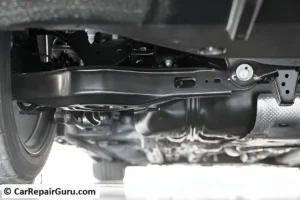
Replacing control arms in pairs is often recommended for maintaining even wear and balanced handling. When one control arm fails, the other is likely subject to similar wear and tear, especially in vehicles with high mileage. Installing a new control arm alongside an old, worn one can lead to uneven suspension performance and alignment issues.
Replacing both control arms ensures even distribution of stress across the suspension system, which translates to improved handling and smoother rides. Additionally, this approach minimizes the risk of having to revisit repairs shortly after replacing just one control arm.
While replacing car control arms in pairs may cost more upfront, it often saves money in the long run by reducing the need for frequent realignments or premature tire replacements caused by uneven wear. This proactive approach keeps your vehicle safer and more reliable.
Is an Alignment Necessary After Replacement?
Yes, an alignment is necessary after replacing car control arms to maintain proper suspension geometry and ensure safe driving. Control arms play a vital role in keeping the wheels aligned and stable. When they are replaced, the suspension geometry can shift slightly, affecting wheel alignment. Misaligned wheels can lead to uneven tire wear, poor handling, and even steering instability.
A post-replacement alignment ensures that all suspension components work harmoniously, restoring the precise angles needed for optimal performance. Skipping this step can result in costly issues down the line, including premature tire wear and additional suspension stress.
Most professional mechanics include an alignment as part of the control arm replacement service. If you’re performing the repair yourself, scheduling an alignment with a trusted shop afterward is crucial for long-term safety and performance.
Safety Tips for Replacing Control Arms
Replacing car control arms requires strict adherence to safety precautions to avoid accidents and ensure the repair is successful.
- Ensure Secure Vehicle Support
Always use a high-quality floor jack and jack stands to support your vehicle. Never rely solely on the jack, as it can fail unexpectedly. - Double-Check Installations
Verify that all bolts and nuts are tightened to the manufacturer’s specifications using a torque wrench. Loose fittings can lead to steering instability or suspension failure. - Work on a Flat Surface
Perform the repair on a stable, level surface to prevent the vehicle from shifting during the process.
Following these tips ensures both your safety and the durability of the repair.
Conclusion
Replacing car control arms is an essential maintenance task to ensure your vehicle’s safety, stability, and overall performance. Recognizing the signs of wear, such as steering instability and uneven tire wear, and addressing them promptly can prevent more significant suspension issues. Whether you choose to replace the control arms yourself or hire a professional, understanding the process, costs, and safety tips equips you to make an informed decision.
Remember, after completing the replacement, scheduling a wheel alignment is crucial to maintain proper suspension geometry and avoid premature tire wear. Regular maintenance and inspections can further extend the lifespan of your vehicle’s suspension system. Taking proactive steps ensures a smoother, safer ride for you and your passengers.
FAQs About Replacing Car Control Arms
1. Can I drive with a bad control arm?
Driving with a bad control arm is unsafe. A damaged control arm compromises your suspension system, increasing the risk of steering instability or suspension failure, especially at high speeds or over rough terrain. Addressing the issue promptly is crucial for your safety.
2. Is replacing control arms worth it?
Yes, replacing car control arms is worth the investment. It restores proper handling, prevents uneven tire wear, and avoids further damage to the suspension system, which could lead to more costly repairs down the road.
3. How long does it take to replace a control arm?
Replacing a control arm typically takes 2–4 hours, depending on the vehicle model and the experience of the person performing the repair. Professional mechanics may complete the task faster with specialized tools.
4. What happens if you don’t align wheels after replacement?
Skipping alignment after replacing control arms can result in misaligned wheels. This leads to uneven tire wear, poor handling, and additional strain on the suspension system, which can reduce the lifespan of other components.
